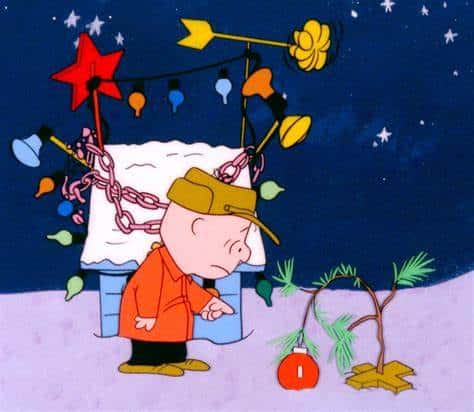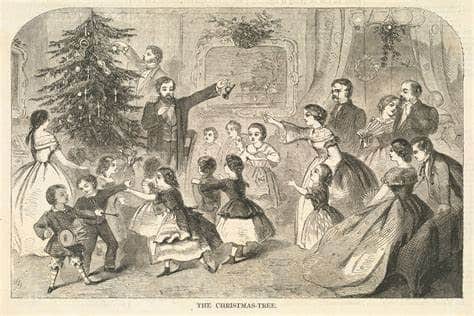Probably the most popular Christmas tradition is putting up the Christmas Tree. Every family has its own traditions as to when and how they put it up.
My childhood favorite was at my grandma's house. We would always put it up the day after Thanksgiving while my parents would be Black Friday shopping. She had many traditional ornaments and decorations, but two always stuck out to me:
- The elf she would put on the tree. This was before the Elf on the Shelf tradition became commercialized. She would always hang this squatting elf on the tree and tell my sister and me that he would be watching over the tree to make sure nobody did anything wrong.
- My grandma always bought what she called icicles, which were silver strips of confetti that we would throw all over the tree. It would make a mess, and the tree would look a little sloppy in hindsight, but we loved it, and it is a great memory.
Of course, one of my first memories of a Christmas Tree being mentioned was the Charlie Brown Christmas Tree.

As I got older and learned that Christmas was basically a holiday that Christianized the winter solstice, I started to gain a curiosity about where the traditions of Christmas came from. Did they all have pagan origins that were eventually Christianized?
Was the origin of the Christmas Tree Pagan?
Origin of the Christmas Tree
The answer to where or not the Christmas Tree was pagan is ... kinda.
To reiterate what I said prior, Christmas takes place around the time that most cultures prior to Christianity celebrated the winter solstice.
Here is what some of the ancient cultures did around that time:
- Egyptians: They viewed evergreens as a symbol of life's victory over death. Around the solstice, they would bring date palm leaves into their homes.
- Romans: Prior to Christmas, the Romans celebrated a festival called Saturnalia around the winter solstice, which would have been on December 25th on the Julian Calendar. They were believed to use hanging mistletoe during these celebrations.
- Celtics: Druids would use evergreen plants and mistletoe during their winter solstice celebrations. The mistletoe did not represent any sort of kissing but rather as a symbol of the birth of a god.
- German: They would use evergreen trees as a symbol of hope for the coming spring. This is probably the practice that eventually evolved into what we know now.

As you can see, the origin evolved from something evergreen, such as a mistletoe, to a tree.
As far as how it became what it is today, it is best to look back to the mid-16th century in the region of Alsace, which was originally German.
In 1521, the first pine tree was decorated and used in a celebration that would become known as Christmas. After this event, Christmas Trees continue to show up in the records.
In 1539, a Christmas Tree was used for a Christmas celebration in the Cathedral of Strasbourg.
In 1570, A fir tree was decorated with fruits and nuts that children would eat on Christmas.
By the 18th century, Christmas Trees were very common throughout northern Germany. It had spread from the community church to the individual home. It began to spread outside of Germany to the Roman Catholic Church, and by the 19th century, the Christmas tree had spread to Vienna and eventually France.
At this time, it had been spread to the United States into various cities where German immigrants resided. By the mid-18th century, there were many cities in the United States to put up their first Christmas Tree.
The state that was influenced the most by the Christmas Tree due to its German population was Pennsylvania. The first decorated Christmas tree recorded in America was in 1747 in Bethlehem, Pennsylvania.
There are other cities that claim to have had the first Christmas Tree in America.
Conclusion
It is clear that the modern origin of the Christmas Tree came from German immigrants, and it has evolved to become a Christmas centerpiece.
Over my lifetime, I have seen real trees, such as the one cut down by Clark Griswold in Christmas Vacation:
What my family typically used was artificial trees that we pulled out of the attic every year and fought with a ball of lights that were knotted from the year prior.
To what we have now, which is a pre-lit Christmas Tree.
Regardless, it is always a fun time to put up the tree. The kids get in the spirit, the Christmas Carols are playing, and when it is finished, is accents the room for the rest of the season.
